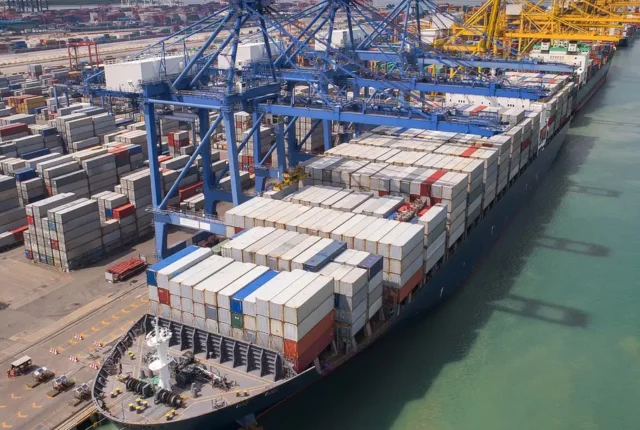
4PL Implementation: Overcoming Challenges in Supply Chain Integration
In today’s dynamic business landscape, effective supply chain management is crucial for organizations to stay competitive. Supply chain integration plays a pivotal role in streamlining operations, reducing costs, and enhancing customer satisfaction. However, implementing a fourth-party logistics (4PL) solution can present unique challenges that require careful consideration and planning.
This article delves into the world of 4PL implementation, exploring the challenges that organizations may encounter and providing practical strategies to overcome them. From aligning organizational goals to technological hurdles, we will guide you through the journey of achieving successful supply chain integration with 4PL.
4PL Implementation: Overcoming Challenges in Supply Chain Integration
Implementing a 4PL solution brings numerous advantages to businesses, such as improved visibility, reduced complexities, and optimized resource allocation. However, it also introduces several challenges that need to be addressed proactively. Let’s explore these challenges and discover effective ways to overcome them.
- Aligning Organizational Goals
When embarking on a 4PL implementation, it’s crucial to ensure that all stakeholders are aligned with the organization’s strategic objectives. Misalignment in goals can lead to conflicts and hinder the integration process. Therefore, it’s essential to have open and transparent communication channels to foster collaboration between internal teams and external partners.
- Managing Change Effectively
Implementing a 4PL solution often requires a significant change in the organization’s existing processes and systems. Change can be met with resistance, leading to a slowdown in implementation or even failure. To mitigate this challenge, it’s important to have a change management plan in place. This includes clearly communicating the benefits of 4PL integration, providing training and support to employees, and addressing any concerns or resistance promptly.
- Technology Integration and Interoperability
Integrating various technology platforms is a critical aspect of successful 4PL implementation. However, different systems may have compatibility issues, leading to data inconsistencies and operational bottlenecks. To overcome this challenge, it’s vital to assess the compatibility of existing systems with the 4PL solution and invest in necessary upgrades or customizations. Additionally, establishing robust data integration protocols and ensuring interoperability between systems will enable smooth information flow across the supply chain.
- Ensuring Data Security and Privacy
With increased reliance on technology and data sharing, organizations must prioritize data security and privacy. Implementing a 4PL solution involves exchanging sensitive information with external partners, making it crucial to establish robust data protection measures. This includes implementing secure data transfer protocols, encryption, access controls, and regular audits to ensure compliance with data protection regulations.
- Building Strong Collaborative Partnerships
4PL implementation often involves working closely with external partners, such as logistics service providers and technology vendors. Building strong collaborative partnerships based on trust and mutual goals is essential for successful integration. Regular communication, performance monitoring, and continuous improvement initiatives are key to nurturing these partnerships and driving long-term success.
- Managing Complex Supply Chain Networks
Supply chains today can be complex, involving multiple suppliers, manufacturers, distributors, and retailers across different geographic regions. Integrating such diverse networks can be challenging, requiring a deep understanding of each partner’s capabilities, processes, and requirements. Investing in supply chain visibility tools, such as advanced analytics and real-time tracking systems, can provide valuable insights and enable better coordination among all stakeholders.
Frequently Asked Questions (FAQs)
Q1: What is 4PL implementation?
4PL implementation refers to the process of integrating a fourth-party logistics solution into an organization’s supply chain management strategy. It involves outsourcing logistics functions to a specialized service provider who takes a holistic approach to managing the entire supply chain, coordinating with multiple logistics service providers, and leveraging technology for seamless integration.
Q2: What are the benefits of 4PL implementation?
4PL implementation offers several benefits, including enhanced supply chain visibility, improved operational efficiency, optimized resource allocation, reduced costs, and increased customer satisfaction. By outsourcing logistics management to a specialized provider, organizations can focus on their core competencies while leveraging the expertise of the 4PL to streamline operations.
Q3: How can organizational goals be aligned during 4PL implementation?
Aligning organizational goals during 4PL implementation requires clear communication, collaboration, and shared understanding of objectives. Regular meetings, workshops, and discussions with all stakeholders help identify and address any misalignment in goals. It’s important to establish a common vision and ensure everyone is working towards the same objectives.
Q4: What role does technology play in 4PL implementation?
Technology plays a crucial role in 4PL implementation by enabling seamless integration, real-time visibility, and efficient data exchange across the supply chain. It helps automate processes, track shipments, analyze data for insights, and improve overall supply chain performance. Selecting the right technology platforms and ensuring their compatibility with existing systems are essential for successful implementation.
Conclusion
4PL implementation can significantly enhance supply chain integration and deliver tangible benefits for organizations. However, it’s essential to address the challenges that may arise during the implementation process proactively. By aligning organizational goals, managing change effectively, investing in technology integration, ensuring data security, fostering collaborative partnerships, and managing complex supply chain networks, organizations can overcome these challenges and achieve seamless supply chain integration with 4PL.
Remember, successful 4PL implementation requires a holistic approach, with careful consideration of people, processes, and technology. By overcoming these challenges, organizations can unlock the full potential of their supply chains, optimize operations, and gain a competitive edge in the market.





